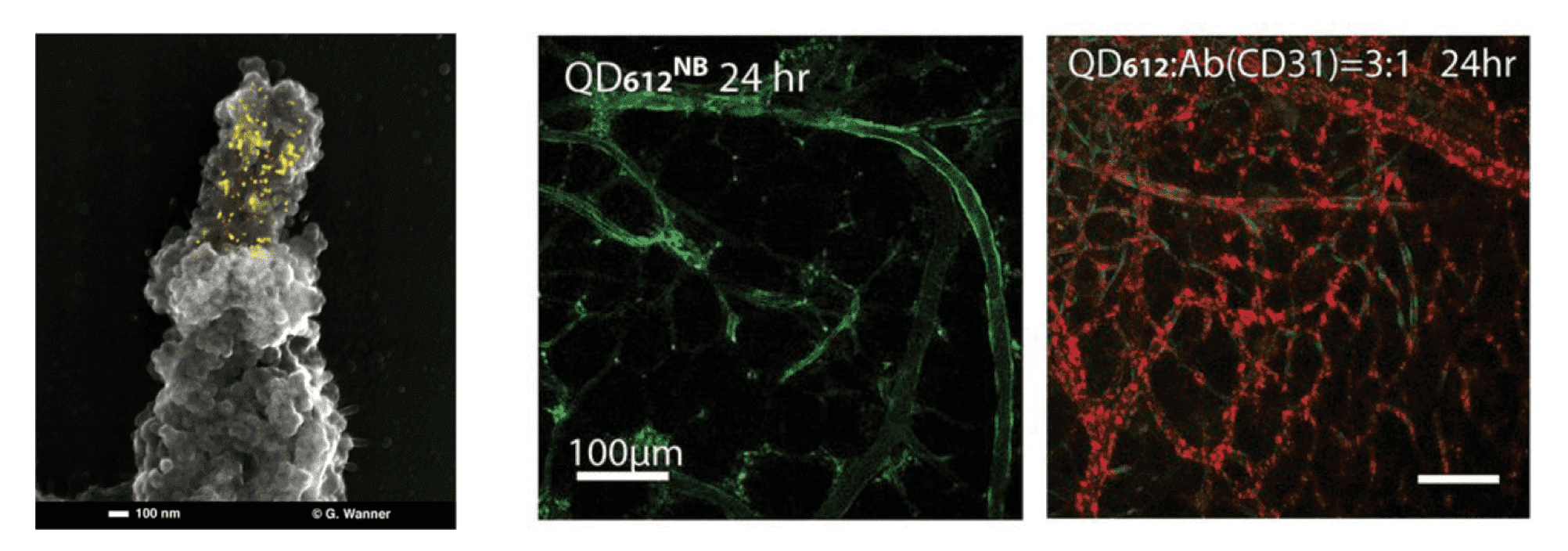Antibody-based Probes
Monoclonal antibodies are versatile tools against numerous diseases ranging from cancers to series of infectious, immunological, or chronic diseases. Their high affinity and specificity towards corresponding antigens make them excellent molecular trackers for the targets in the form of antibody-based probes. Besides the expertise in antibody design and engineering, Creative Biolabs is also dedicated to the areas of high-resolution imagery, molecular tracking, and cancer diagnostics by developing customized Antibody-based Probes via the conjugation of monoclonal antibodies with various biophysical probes. With more than 10 years of experience in bio-conjugation chemistry and high-resolution imagery, the science team at Creative Biolabs can provide customers with comprehensive services from antibody design to the production of fully conjugated antibody-based probes.
Protein in nature, antibodies are versatile bio-macromolecule candidates for the conjugation with numerous biophysical agents to form antibody-based probes that are widely used in high-resolution imagery. Antibodies are routinely conjugated with gold nanoparticles via physical, immunological, or chemical methods to form antibody-nanogold probes that are excellent contrast enhancement agents for electron microscopy.
 Antibody-based probes in high-resolution imagery. (Left)Antibody-nanogold probes visualized in Oziro biflora chromosome. (Right set of two) CD31 antibody conjugated with QD612 quantum dots to target blood vascular endothelial cells (PNAS, 2015).
Antibody-based probes in high-resolution imagery. (Left)Antibody-nanogold probes visualized in Oziro biflora chromosome. (Right set of two) CD31 antibody conjugated with QD612 quantum dots to target blood vascular endothelial cells (PNAS, 2015).
Alternatively, conjugation of an antibody with quantum dots (QD) through biotin linker or other necessary linking mechanisms yields antibody-QD probes that can be equivocally used in high-resolution imagery methods such as fluorescence microscopy or electron microscopy.
Similarly, various fluorophores have been chemically conjugated with antibodies generating fluorescent antibody probes that are widely exploited in fluorescent microscopy such as confocal microscopy and the more advanced stochastic optical reconstruction microscopy (STORM). Moreover, fluorescent antibody probes are widely applied in analytical methodologies such as flow cytometry for cell sorting, resulting in a dramatic increase in the resolution and efficiency of these analyses.
 Fluorescently labeled antibody-based probes facilitate the fields of high-resolution imagery and advanced analytical methodologies
Fluorescently labeled antibody-based probes facilitate the fields of high-resolution imagery and advanced analytical methodologies
Seeing is believing. We are living in an era where high-resolution imagery and efficient disease diagnosis prevail. Both concepts are heavily relied upon in fields such as current medicine, biomedical research, new product development and even more remotely, artistic creation, to advance our knowledge of the fast-changing world and in the meantime, provide us with new means to treat and defend ourselves against numerous new threats. Many high-resolution imagery platforms have been launched in recent years, so as various biological probes to support those platforms. Enhanced by the high specific targeting capability of antibodies, antibody-based probes will undoubtedly bring high-resolution imagery to the next level.
In terms of target tracking and efficient diagnosis, antibodies are traditionally labeled with radioactive isotopes, a method that has gradually lost its popularity and has been replaced by electron magnetic scanning facilitated by paramagnetic ions. These paramagnetic or radiolabeled antibody probes provide scientists and physicians with the powerful assets to track the distribution, transportation, and elimination of a unique “molecule of interest” via diverse imaging techniques. Meanwhile, biochemical analysis kits, taking advantage of fast biochemical assays (for instance horseradish peroxidase and alkaline phosphatase) and the high specificity of antibodies, enable fast but accurate analyses of single or multiple molecular markers in cancer and related diseases.
Experienced in antibody chemistry and with dedicated commitment to the scientific community, Creative Biolabs has perfected our technical pipelines in the development of diverse antibody-based probes. We would like to share our knowledge and passion in this field to promote the advances of science and for a better tomorrow. Please contact us for more information and a detailed quote.
Reference:
- Han, H.S.; et al. Quantum dot/antibody conjugates for in vivo cytometric imaging in mice. Proc Natl Acad Sci USA. 2015, 112: 1350–1355.
For Research Use Only. NOT FOR CLINICAL USE.

Online Inquiry
Welcome! For price inquiries, please feel free to contact us through the form on the left side. We will get back to you as soon as possible.
